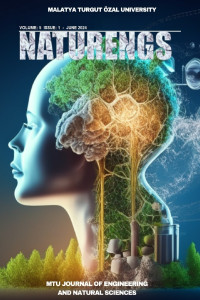Abstract
References
- Acharya, S., Y. Dvorkin, H. Pandžić and R. Karri, (2020), Cybersecurity of Smart Electric Vehicle Charging: A Power Grid Perspective, IEEE Access, vol. 8, pp. 214434-214453.
- ElKashlan M, Elsayed MS, Jurcut AD, Azer M. A, (2023), Machine Learning-Based Intrusion Detection System for IoT Electric Vehicle Charging Stations (EVCSs). Electronics., 12(4):1044.
- Ali Arsalan, Laxman Timilsina, Behnaz Papari, Grace Muriithi, Gokhan Ozkan, Phani Kumar, Christopher S. Edrington, (2023), Cyber Attack Detection and Classification for Integrated On-board Electric Vehicle Chargers subject to Stochastic Charging Coordination, Transportation Research Procedia, Volume 70, Pages 44-51, ISSN 2352-146.
- Dustin Kern, Christoph Krauß, and Matthias Hollick. (2023), Detection of Anomalies in Electric Vehicle Charging Sessions. In Proceedings of the 39th Annual Computer Security Applications Conference (ACSAC '23). Association for Computing Machinery, New York, NY, USA, 298–309.
- https://www.unb.ca/cic/datasets/evse-dataset-2024.html
- Güven, Z. A. (2024). Ses analizi ile müzik türlerinin sınıflandırılmasına yönelik kapsamlı bir çalışma. Niğde Ömer Halisdemir Üniversitesi Mühendislik Bilimleri Dergisi, 13(1), 325-333. https://doi.org/10.28948/ngumuh.1344605
- Parhi, K. K., and Ayinala, M. (2013). Low-complexity Welch power spectral density computation. IEEE Transactions on Circuits and Systems I: Regular Papers, 61(1), 172-182.
- Goodfellow, I., Pouget-Abadie, J., Mirza, M., Xu, B., Warde-Farley, D., Ozair, S., ... & Bengio, Y. (2014). Generative adversarial nets. Advances in neural information processing systems, 27.
- https://www.geeksforgeeks.org/generative-adversarial-network-gan/
- Tanyıldız, H., Şahin, C. B., & Dinler, Ö. B. Effective Cyber Attack Detection Based on Augmented Genetic Algorithm with Naive Bayes. NATURENGS, 4(2), 30-35.
- Natekin, A., & Knoll, A. (2013). Gradient boosting machines, a tutorial. Frontiers in neurorobotics, 7, 21.
- Khan, S. N., Khan, S. U., Aznaoui, H., Şahin, C. B., & Dinler, Ö. B. (2023). Generalization of linear and non-linear support vector machine in multiple fields: a review. Computer Science and Information Technologies, 4(3), 226-239.
- https://www.unb.ca/cic/datasets/evse-dataset-2024.html
- Suthaharan, S., & Suthaharan, S. (2016). Decision tree learning. Machine Learning Models and Algorithms for Big Data Classification: Thinking with Examples for Effective Learning, 237-269.
- Malik, R., Singh, Y., Sheikh, Z. A., Anand, P., Singh, P. K., & Workneh, T. C. (2022). [Retracted] An Improved Deep Belief Network IDS on IoT‐Based Network for Traffic Systems. Journal of Advanced Transportation, 2022(1), 7892130.
- Basnet, M., & Ali, M. H. (2020, September). Deep learning-based intrusion detection system for electric vehicle charging station. In 2020 2nd International Conference on Smart Power & Internet Energy Systems (SPIES) (pp. 408-413). IEEE.
Enhancing Cybersecurity through GAN-Augmented and Hybrid Feature Selection Machine Learning Models: A Case Study on EVSE Data
Abstract
Electric Vehicle Charging Stations (EVCSs) are critical components of modern transportation infrastructure. However, smart grid integrations create new security vulnerabilities. Cyber attacks can damage EVCSs, cause financial losses, and compromise user security. Traditional security measures are not enough. By analyzing the large data sets produced by EVCSs, machine learning (ML) can detect anomalies and provide predictive maintenance. The increasing importance of EVCSs in smart grid infrastructure necessitates taking advanced security measures. Machine learning-based intrusion detection systems represent a promising solution to the dynamic and complex cyber threats facing these critical infrastructures. Through continuous learning and adaptation, ML can provide a robust defense mechanism that ensures the security and reliability of EVCSs in the face of evolving cyber threats.
References
- Acharya, S., Y. Dvorkin, H. Pandžić and R. Karri, (2020), Cybersecurity of Smart Electric Vehicle Charging: A Power Grid Perspective, IEEE Access, vol. 8, pp. 214434-214453.
- ElKashlan M, Elsayed MS, Jurcut AD, Azer M. A, (2023), Machine Learning-Based Intrusion Detection System for IoT Electric Vehicle Charging Stations (EVCSs). Electronics., 12(4):1044.
- Ali Arsalan, Laxman Timilsina, Behnaz Papari, Grace Muriithi, Gokhan Ozkan, Phani Kumar, Christopher S. Edrington, (2023), Cyber Attack Detection and Classification for Integrated On-board Electric Vehicle Chargers subject to Stochastic Charging Coordination, Transportation Research Procedia, Volume 70, Pages 44-51, ISSN 2352-146.
- Dustin Kern, Christoph Krauß, and Matthias Hollick. (2023), Detection of Anomalies in Electric Vehicle Charging Sessions. In Proceedings of the 39th Annual Computer Security Applications Conference (ACSAC '23). Association for Computing Machinery, New York, NY, USA, 298–309.
- https://www.unb.ca/cic/datasets/evse-dataset-2024.html
- Güven, Z. A. (2024). Ses analizi ile müzik türlerinin sınıflandırılmasına yönelik kapsamlı bir çalışma. Niğde Ömer Halisdemir Üniversitesi Mühendislik Bilimleri Dergisi, 13(1), 325-333. https://doi.org/10.28948/ngumuh.1344605
- Parhi, K. K., and Ayinala, M. (2013). Low-complexity Welch power spectral density computation. IEEE Transactions on Circuits and Systems I: Regular Papers, 61(1), 172-182.
- Goodfellow, I., Pouget-Abadie, J., Mirza, M., Xu, B., Warde-Farley, D., Ozair, S., ... & Bengio, Y. (2014). Generative adversarial nets. Advances in neural information processing systems, 27.
- https://www.geeksforgeeks.org/generative-adversarial-network-gan/
- Tanyıldız, H., Şahin, C. B., & Dinler, Ö. B. Effective Cyber Attack Detection Based on Augmented Genetic Algorithm with Naive Bayes. NATURENGS, 4(2), 30-35.
- Natekin, A., & Knoll, A. (2013). Gradient boosting machines, a tutorial. Frontiers in neurorobotics, 7, 21.
- Khan, S. N., Khan, S. U., Aznaoui, H., Şahin, C. B., & Dinler, Ö. B. (2023). Generalization of linear and non-linear support vector machine in multiple fields: a review. Computer Science and Information Technologies, 4(3), 226-239.
- https://www.unb.ca/cic/datasets/evse-dataset-2024.html
- Suthaharan, S., & Suthaharan, S. (2016). Decision tree learning. Machine Learning Models and Algorithms for Big Data Classification: Thinking with Examples for Effective Learning, 237-269.
- Malik, R., Singh, Y., Sheikh, Z. A., Anand, P., Singh, P. K., & Workneh, T. C. (2022). [Retracted] An Improved Deep Belief Network IDS on IoT‐Based Network for Traffic Systems. Journal of Advanced Transportation, 2022(1), 7892130.
- Basnet, M., & Ali, M. H. (2020, September). Deep learning-based intrusion detection system for electric vehicle charging station. In 2020 2nd International Conference on Smart Power & Internet Energy Systems (SPIES) (pp. 408-413). IEEE.
Details
| Primary Language | English |
|---|---|
| Subjects | Computer Software |
| Journal Section | Research Articles |
| Authors | |
| Publication Date | June 29, 2024 |
| Submission Date | June 4, 2024 |
| Acceptance Date | June 28, 2024 |
| Published in Issue | Year 2024 Volume: 5 Issue: 1 |


